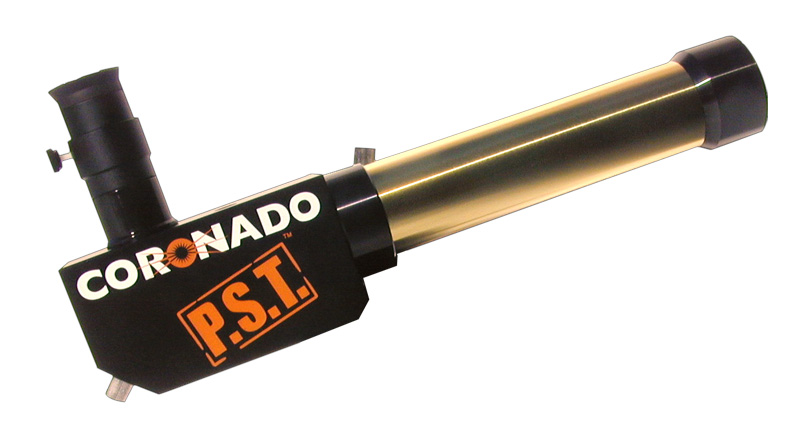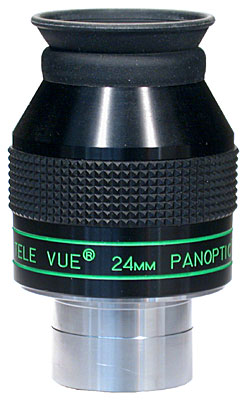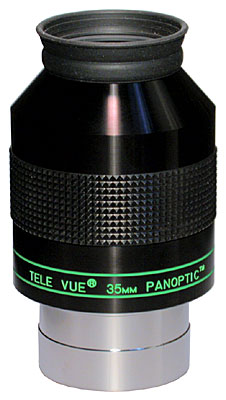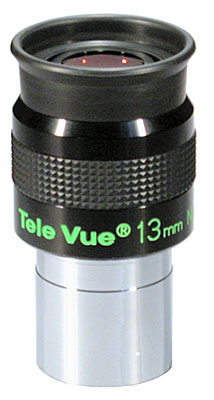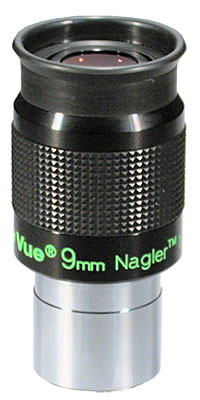Michael McNeely Reviews
1 of 1 people found the following review helpful
Coroando PST: Revolutionary!
The Coronado PST is a small refracting telescope that allows observation of the sun in the light of hydrogen-alpha. At $500, the PST makes h-alpha astronomy available to regular people.
This robust scope is made entirely of metal. It provides nice sharp views. With good observing conditions, I can see the chromosphere as a spiky fringe along the edge of the solar disk, and I can also see surface details such as filaments. Prominences appear as phantasmagoric shapes suspended against the black of space. When visible, flares resemble bright white patches superimposed on the chromosphere.
Owning the PST has made me feel like an active participant in solar astronomy.
No other celestial object exhibits the capacity for rapid change like the sun does. The sun’s appearance also changes as it rotates. New active regions and sunspots appear, drift across, and disappear within a few days. These active regions may spawn flares that cause disruptions on earth and aurora displays. The PST allows a front row seat for all of this action.
I believe that the PST is the greatest innovation to enter amateur astronomy since the advent of the Dobsonian telescope.
1 of 1 people found the following review helpful
Faithful Friend
If TeleVue eyepieces have personalities (they do), then the 24mm Panoptic is that of a steadfast and dependable friend. Along with the 7mm Nagler, the 24 Pan is my favorite TV eyepiece.
The 24 Pan resembles a scaled-down version of the 2-in format 35 Panoptic, yet it has many advantages when compared to its older sibling. Being a 1.25-in eyepiece, the 24 Pan is more inviting to use. It is lightweight, and using the 24 Pan doesn’t require rebalancing your scope. This is a versatile eyepiece. It combines the big views of the 35 Pan with the convenient 1.25-in format. The 24 Pan is as comfortable to look through as the 35 Pan, but it is still very pleasant to use. The 24 Pan provides wide views of deep sky objects and their surrounding environments. Star images are pinpoint-sharp across the field and without false color.
The 24 Pan, with its 68-deg apparent field, provides the same true field as a 32mm Plossl (50-degree app field) yet at a higher magnification. The view through a 50-deg field eyepiece resembles a discrete circle surrounded by darkness. With the Panoptic, this circular field appears stretched and surrounds your vision. The effect is like staring into a partial hemisphere of stars. Observing with the 24 Pan is a more immersive experience.
The 24 Pan seems primarily for deep sky observing. I notice that, when pointed toward the moon or a bright patch of sky, that dust on the eye lens appears as distinct shadows in the field. This effect is absent with dark sky viewing. The TV 32 Plossl does not behave like this, and I would prefer it to the 24 Panoptic for viewing, for example, a bright crescent moon and surrounding field.
If you are looking for a deep sky eyepiece that provides immersive views, comfortable eye relief, and greater convenience than 2-in eyepieces, then I recommend the 24 Pan. It will be your faithful observing friend, along with a thermos of coffee and the family dog.
Holy Hand Grenade!
This 2-inch “hand grenade†eyepiece is a superb low power performer. In a TeleVue-76 mm refractor, the 35 Panoptic delivers 14x and a 5-degree field. It is a lot of fun to sweep large star fields with this setup. You can see the entire Belt of Orion in the same eyepiece field. This is the perfect eyepiece for viewing the Trifid and Lagoon together in the same field, or the entire Andromeda Galaxy as a cigar-shaped glowing cloud.
When observing, I tend to rest my eye on the edge of the field and peer over. The eyepiece provides a bright, wide window on space. The 35 Panoptic is the most comfortable eyepiece that I have ever used. There are no eye relief issues with this eyepiece (I don’t wear glasses). Stars are sharp from edge-to-edge, and there are no false colors. The eyepiece does need occasional cleaning. Dust on the eye lens is visible when viewing a bright moon-lit field, but for dim deep sky viewing this is not an issue.
My only objection to the 35 Panoptic is its size and weight. I need to rebalance my scopes when using the eyepiece. For these reasons, I don’t use the 35 Panoptic as much as other eyepieces like the 1.25-inch 24 Panoptic. But if you like 2-inch eyepieces, and want a more affordable alternative to TeleVue’s other big eyepieces, then I recommend the 35 Panoptic.
Lucky 13
With all the excitement over the Ethos, I am reminded of an earlier exciting TeleVue eyepiece, the 13mm Nagler Type 6. With this new eyepiece, Al Nagler converted the huge Type 1 Nagler 13 into a lighter, 1.25-in format. This is a hallmark of the Type 6s, converting larger, unwieldy eyepieces (the 13 and 9mm Naglers) into small, light, convenient eyepieces. The Type 6s are all similar in size, weight, and appearance. TeleVue has also introduced some short focal lengths (3.5, 2.5 mm) into the series so that observers can have 82-degree views when observing at high magnifications. In my 7-inch Maksutov, the 13 Nagler makes a fine planetary eyepiece providing 205x. I have had outstanding views of planets with this setup.
In many ways, the new 13 Nagler is a perfect eyepiece. It provides a mid-range magnification in most scopes. In my TV-85, the 13 Nagler gives 46x and a 1.8-deg true field. The exit pupil is an ideal 1.8mm. The eye lens of the 13 Nagler is surrounded by a ring of rubber that helps block ambient light. The eye relief is comfortable and seems just right (I don’t wear glasses).
The 13 Nagler provides wonderful views of deep sky objects. One of my favorite fields with this eyepiece in the TV-85 is M81 and M82. Both galaxies are shown floating behind a sizeable area of stars, and their individual morphologies or characters are apparent. It is a singularly lovely view and imparts the vastness of space to an observer. Here are two island universes separated from our Milky Way by millions of light years. Each system is an immense congerie of hundreds of billions of stars, yet their light is so far removed from our position in space that they appear as fragile wisps of light in the telescope.
I highly recommend the 13mm Nagler Type 6. It is the perfect eyepiece for about any kind of telescope.
Dont Pluto this Nine!
I had often considered obtaining the older Type 1, 9mm Nagler, but I wasn’t particularly fond of the size of the eyepiece and its double-skirt, 2/1.25 inch tube. As a result, I was very excited when the new Type 6 Naglers were released. Al had transformed his 2-inch Goliaths into smaller Davids-lighter, more convenient eyepieces. I initially purchased the 13mm Nagler Type 6, and later the 9mm. I found it remarkable that Al had been able to transform eyepieces of such disparate sizes into a general set featuring similar housings, eye reliefs, and weights. With their 82-degree apparent fields, sharp optics, and comfort of use, the Type 6s must surely rank as the nicest 1.25-in eyepieces available today.
With a TV-85, the 9mm Nagler produces 67x with a 1.2-degree true field. At this magnification, planet surface features are starting to become apparent, yet the entire body is surrounded by black sky. Planets in the TV-85 with the 9mm Nagler resemble jeweled orbs suspended in the abyss of space. This eyepiece also provides a good medium power for observing deep sky objects. Highly recommended.
7th Heaven
I own the Type 1 version of this eyepiece, and it was the first Nagler that I purchased. At the time, I wanted it as a high-power eyepiece for my Celestron 8 and as a medium power eyepiece for my TeleVue Pronto.
This eyepiece is incredibly sharp and provides an immersive viewing experience. The Nagler 7 has 10mm of eye relief (12mm for Type 6) which is a bit short, but I still fine the eyepiece to be comfortable to use. The eyepiece has a heft and feeling of quality
I have many fond memories of using this eyepiece. In my Pronto, I used if for close-up views of deep sky objects, and for low-power views of planets. At 69x, planetary disks start to become apparent with this scope and eyepiece. In my TeleVue-85, the Nagler 7 still works in this capacity providing 86x and a 1-degree field.
The 7mm Nagler is my favorite TeleVue eyepiece and is one that I nearly always use when observing. I’m confident that the Type 6 version of this eyepiece can only be better. Highly recommended.
